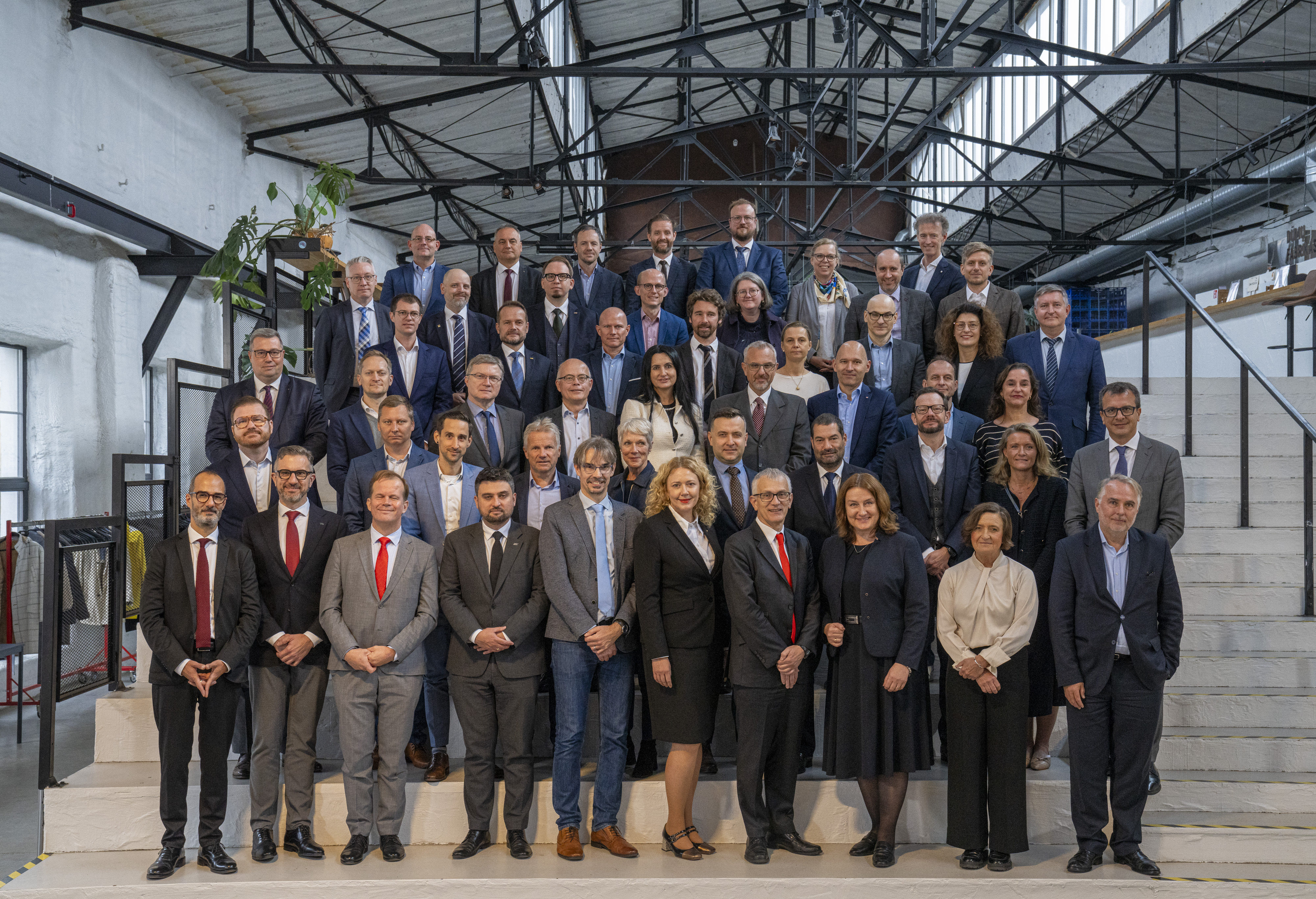European Rail Sector applauds President von der Leyen’s vision for High-Speed Rail
On October 10, European passenger rail CEOs from the Community of European Railway and Infrastructure Companies (CER) and the International Union of Railways (UIC) were hosted by Lithuanian Railways (LTG) in Vilnius for their annual high-level meeting to discuss their long-term vision for customers and passengers. Loreta Maskalioviene, Lithuanian Vice-Minister of Transport and Communications, played a pivotal role in the meeting and offered valuable insights on the future of international passenger services and the critical need for investment in rail infrastructure. The high-level meeting provided a platform to review recent and upcoming policy developments and to identify collaborative opportunities to promote the modal shift to rail across Europe.
The group expressed their support for President von der Leyen’s call for an ambitious European high-speed rail network, which is crucial for advancing sustainable transport. Research conducted by rail companies and CER has highlighted the socio-economic and environmental advantages of such a network, emphasizing the importance of investing in cross-border connections to achieve the EU’s climate objectives.
The participants also reaffirmed their commitment to achieving seamless cross-border rail ticketing by 2025. This will be accomplished through the implementation of the Open Sales and Distribution Model (OSDM), the expansion of the CIT Agreement on Journey Continuation (AJC), and the execution of other initiatives outlined in the CER Ticketing Roadmap. These efforts have been proactively designed and agreed upon by European rail passenger undertakings, in collaboration with CER, UIC, and CIT.
To boost rail capacity and provide reliable services to passengers, the participants committed to collaborate closely with infrastructure managers and freight operators. A robust Capacity Regulation (currently debated by EU legislators in Brussels) is essential to accelerating the Timetable Redesign Project (TTR) and Digital Capacity Management (DCM), ensuring improved cross-border and national operations.
Participants also praised the emphasis on completing the remaining sections of the Trans-European Transport Network (TEN-T) by 2030. Initiatives such as Rail Baltica, which will link major Baltic cities to the broader European rail network, are essential for meeting the EU’s mobility goals and promoting economic development.
LTG CEO Kristina Meidė said: “First of all, it is a pleasure and an honour to host such an important event in Lithuania. I believe that the meeting of the railway passenger sector leaders in Vilnius will yield tangible results — new solutions and joint commitments. This is an important event in the context of the development of the European railway system. We will discuss the current situation and create real long-term plans for improving the passenger experience. For this mission to be successful, everyone must set their priorities straight and provide their full support”.
UIC Director General, François Davenne said: “Rail accounts for 7-8% of global freight and passenger transport, but emits only 1-2% of total transport emissions, positioning it as a key and ready player in making mobility and tourism more sustainable. To ensure rail is inclusive and comfortable for all, UIC has launched several initiatives aimed at improving accessibility and passenger satisfaction. In particular, ticketing and distribution play a big role with OSDM - Open Sales and Distribution Model, or AJC - Journey Continuation, developed by the sector for multimodal use. At the same time, investments must be found more than ever to deliver more capacity and build new routes to better connect cities and regions: this appetite for rail is the opportunity for new models”.
CER Executive Director Alberto Mazzola said: “We wholeheartedly support President von der Leyen’s recent call for an ambitious European high-speed rail network as a vital step towards advancing sustainable transport. Studies clearly demonstrate the socio-economic and environmental benefits of such a network, and it is crucial to prioritise investments in cross-border rail connections, ensuring a more integrated and efficient European railway system. For swift and effective improvements, we emphasize the need for a regulatory framework that facilitates the integration of OSDM into the TSI TA Regulation. Protecting ongoing investments is essential to secure OSDM implementation by 2025, thereby enhancing ticketing processes across Europe.”
UIC and CER Members also adopted the HLPM 2024 Resolution which you can find here.

